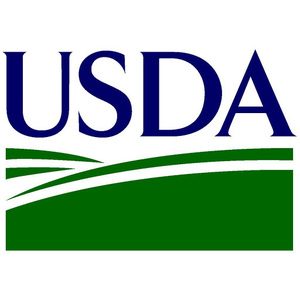USDA extends deadlines for climate-smart commodities funding

March 14, 2022
BY Erin Krueger
The USDA on March 11 announced it is extending the deadlines to apply for its Partnerships for Climate-Smart Commodities funding opportunity. The agency opened the $1 billion funding opportunity in February.
The newly launched program will finance pilot projects that create market opportunities for U.S. agricultural and forestry products that use climate-smart practices and include innovative, cost-effective ways to measure and verify greenhouse gas (GHG) benefits.
The USDA initially set an application deadline of April 8 for the first funding pool, which covers proposals from $5 million to $100 million. Applications for the second funding pool, which includes proposals from $250,000 to $4.99 million, were to be submitted by May 27. Those deadlines have now been extended.
“There has been a high level of interest in the Partnerships for Climate-Smart Commodities funding opportunity, and we want to ensure that a diverse applicant pool is able to apply,” said Under Secretary for Farm Production and Conservation Robert Bonnie. “USDA is extending the deadline for the funding opportunity to provide more time for these applications.”
Advertisement
The new deadline for the first funding pool, which covers proposals from $5 million to $100 million, is now set for May 6. The new deadline for the second funding pool, which covers proposals from $250,000 to $4.99 million, is June 10.
For the purposes of this funding opportunity, a climate-smart commodity is defined as an agricultural commodity that is produced using agricultural (farming, ranching or forestry) practices that reduce GHG emissions or sequester carbon.
Funding for the program will be provided through the USDA’s Commodity Credit Corp. to support pilot projects that provides incentives to producers and landowners to implement climate-smart production practices, activities and systems on working lands; measure/quantify, monitor and verify the carbon and GHG benefits associated with those practices; and develop markets and promote the resulting climate-smart commodities.
According to a notice of funding opportunity (NFO) published by USDA, projects developed under the program must be tied to the development of markets and promotion of climate-smart commodities. “Markets for climate-smart commodities may include companies or processors sourcing climate-smart commodities to meet internal targets or other supply chain goals, biofuel and renewable energy markets, companies seeking to sell branded consumer products, or other opportunities that could provide a premium or additional revenue for participating producers and land owners,” the USDA said in the NFO.
Advertisement
The use of soil amendments, such as biochar, and the development of anaerobic digestion projects are among those listed in the NFO. The NFO outlines additional application requirements that must be completed as part of applications for anaerobic digester projects.
Additional information, including a full copy of the NFO, is available on the USDA website.
Related Stories
The USDA significantly increased its estimate for 2025-’26 soybean oil use in biofuel production in its latest World Agricultural Supply and Demand Estimates report, released July 11. The outlook for soybean production was revised down.
The U.S. Energy Information Administration maintained its forecast for 2025 and 2026 biodiesel, renewable diesel and sustainable aviation fuel (SAF) production in its latest Short-Term Energy Outlook, released July 8.
XCF Global Inc. on July 10 shared its strategic plan to invest close to $1 billion in developing a network of SAF production facilities, expanding its U.S. footprint, and advancing its international growth strategy.
U.S. fuel ethanol capacity fell slightly in April, while biodiesel and renewable diesel capacity held steady, according to data released by the U.S. EIA on June 30. Feedstock consumption was down when compared to the previous month.
XCF Global Inc. on July 8 provided a production update on its flagship New Rise Reno facility, underscoring that the plant has successfully produced SAF, renewable diesel, and renewable naphtha during its initial ramp-up.
Upcoming Events










